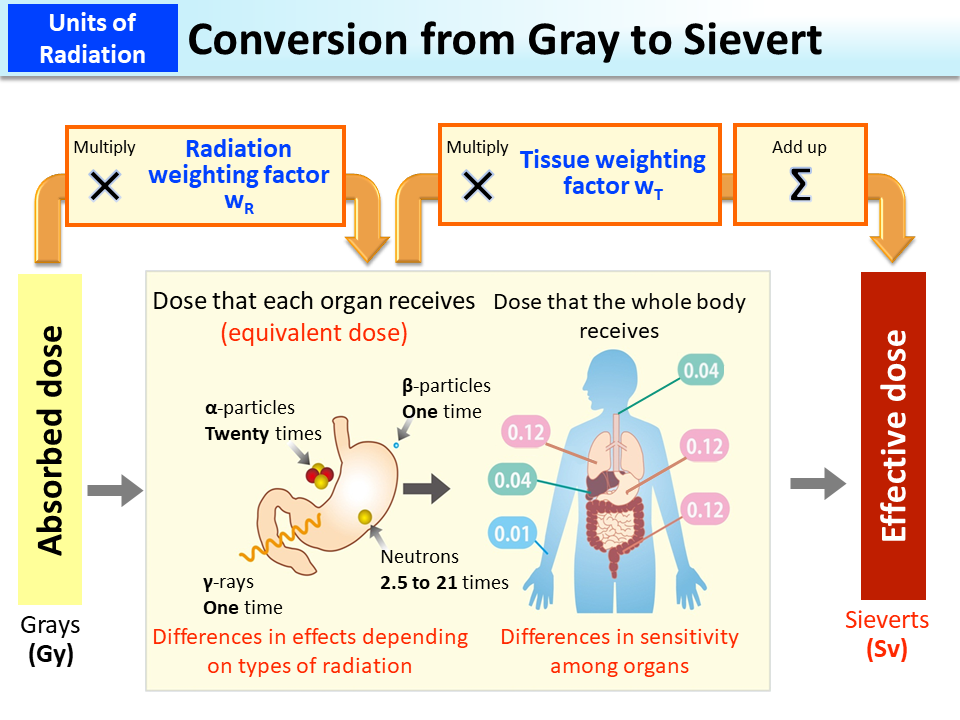Conversion from Gray to Sievert
To calculate the effective dose that expresses the effects of radiation exposure on the whole body, it is necessary to first determine the absorbed doses of individual tissues and organs exposed. The equivalent dose (expressed in sieverts) is obtained by multiplying the absorbed doses of individual tissues and organs by their respective radiation weighting factors (WR) for taking into account the types of radiation. The value of the radiation weighting factor is larger for the types of radiation having larger effects on the human body (α-particles: 20; β-particles and γ-rays: 1).
Once the equivalent doses for individual tissues and organs exposed to radiation are determined, they are then multiplied by the respective tissue weighting factors (WT) for taking into account differences in sensitivity among organs, and the products are summed. The tissue weighting factors are for weighting the radiation sensitivity of individual tissues and organs. Any organ or tissue where radiation is likely to induce fatal cancer is given a higher factor.
The tissue weighting factors summate to 1. Thus, the effective dose can be considered as the weighted average of the equivalent doses of all organs and tissues. Effective doses can be calculated similarly for both internal and external exposures.
(Related to p.38 of Vol. 1, “Various Factors”)
- Included in this reference material on March 31, 2013
- Updated on March 31, 2019

